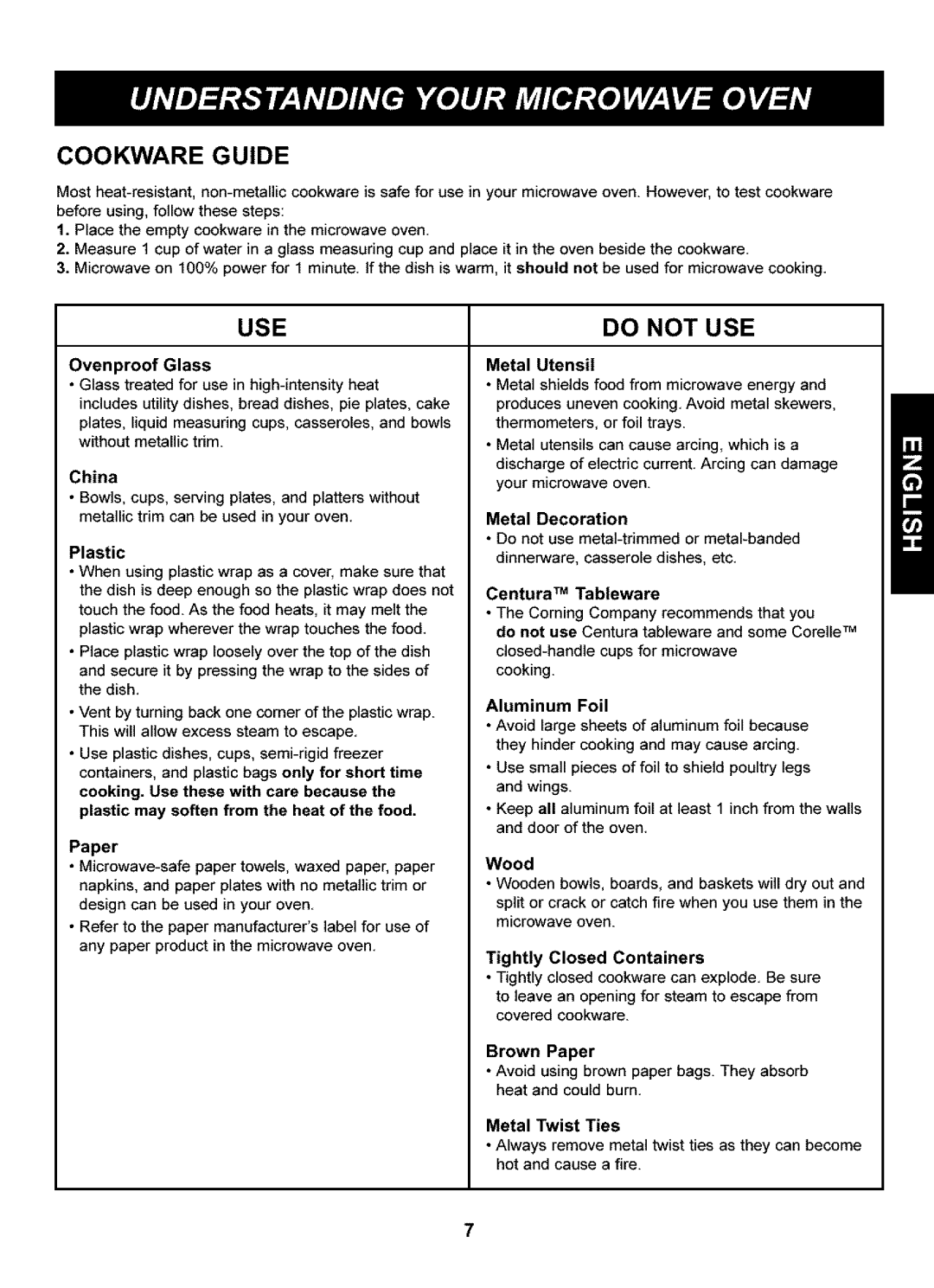
COOKWARE GUIDE
Most
1.Place the empty ceekware in the microwave oven.
2.Measure 1 cup of water in a glass measuring cup and place it in the oven beside the cookware.
3.Microwave on 100% power for 1 minute. If the dish is warm, it should not be used for microwave cooking.
USE | DO NOT USE |
Ovenproof Glass
•Glass treated for use in
includes utility dishes, bread dishes, pie plates, cake plates, liquid measuring cups, casseroles, and bowls without metallic trim.
China
•Bowls, cups, serving plates, and platters without metallic trim can be used in your oven.
Plastic
•When using plastic wrap as a cover, make sure that the dish is deep enough so the plastic wrap does not touch the food. As the food heats, it may melt the plastic wrap wherever the wrap touches the food.
•Place plastic wrap loosely over the top of the dish
and secure it by pressing the wrap to the sides of the dish.
•Vent by turning back one corner of the plastic wrap. This will allow excess steam to escape.
•Use plastic dishes, cups,
Paper
•
•Refer to the paper manufacturer's label for use of any paper product in the microwave oven.
Metal Utensil
•Metal shields food from microwave energy and produces uneven cooking. Avoid metal skewers, thermometers, or foil trays.
•Metal utensils can cause arcing, which is a discharge of electric current. Arcing can damage your microwave oven.
Metal Decoration
•Do not use
Centura TM Tableware
•The Coming Company recommends that you
do not use Centura tableware and some Corelle TM
cooking.
Aluminum Foil
•Avoid large sheets of aluminum foil because they hinder cooking and may cause arcing.
•Use small pieces of foil to shield poultry legs and wings.
•Keep all aluminum foil at least 1 inch from the walls and door of the oven.
Wood
•Wooden bowls, boards, and baskets will dry out and split or crack or catch fire when you use them in the microwave oven.
Tightly Closed Containers
•Tightly closed ceekware can explode. Be sure
to leave an opening for steam to escape from covered cookware.
Brown Paper
•Avoid using brown paper bags. They absorb heat and could burn.
Metal Twist Ties
•Always remove metal twist ties as they can become hot and cause a fire.
7
